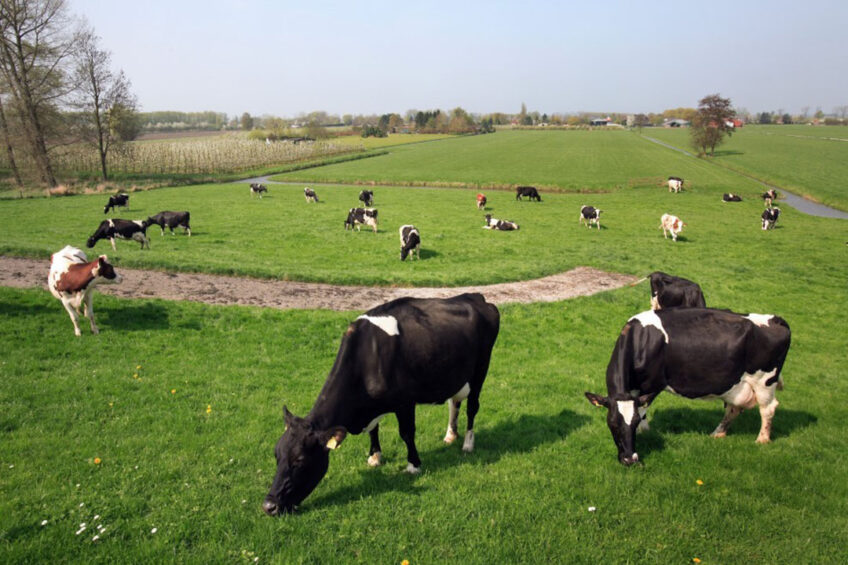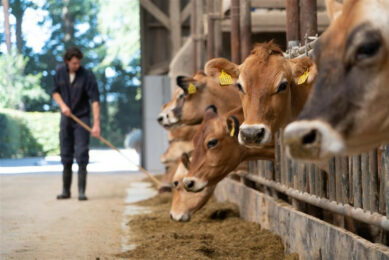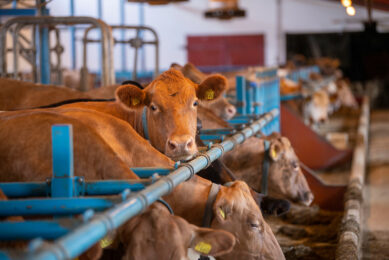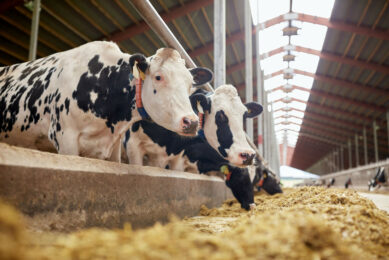Regenerative dairy farming on the rise

Dairy farmers in the UK are signing up in droves to commit to regenerative interventions, which enhance water, nutrient and carbon cycling and relies less on external inputs across tens of thousands of hectares of land.
First Milk members have committed to almost 131,000 field-level interventions across more than 78,000 hectares. More than 90% of members have signed up to the organisations’ regenerative programme, representing more than 96% of its members’ milk.
Each have submitted plans for their farms, using a unique digital mapping tool with each intervention having to support one of the 5 key regenerative farming principles:
- Livestock integration
- Minimise soil disturbance
- Protect soil surface
- Encourage plant diversity
- Maintain living roots
To date, data collected shows that:
- 82% of all members’ land will be grazed by livestock during this year for an average of 7 months.
- Only 7% of members’ land will be ploughed during this year, with 12,762 interventions taken to minimise soil disturbance across nearly 50,000 hectares.
- Members have committed to maintaining a living root across 41,762 ha, which, when added to the area of declared permanent pasture across members’ farms, means 85% of members’ land will have a living root for 12 months of the year.
- Members have committed to 14,295 individual interventions linked to encouraging plant diversity across 55,000 ha and agreed to protect and enhance biodiversity across nearly 70,000 ha.
- 60% of all grazing areas will be rotationally grazed during 2022 for an average of 23 days grazed and 20 days rest.
Commenting on the developments, First Milk sustainability director Mark Brooking said he had been amazed by the level of support: “When combined with our innovative soil carbon analysis programme, we are well placed to achieve our target of sequestrating an additional 100,000 tonnes of CO2 equivalent per year by 2025, as well as enhancing biodiversity and improving water and nutrient cycling.”
The announcement followed a successful ‘Down to Earth’ regenerative farming event at Tim Downes’ Shropshire organic spring-calving dairy farm, which was organised by the Royal Association of British Dairy Farmers and attended by more than 1,500 farmers and 40 leading experts, who talked about agroforestry, soil health and grassland management.
Downes, who has been an organic livestock farmer since 1998, said the amount of grass being grown on his land was increasing year on year due to employing grazing paddocks after every milking, introducing lots of herbal leys, looking at different nutrient additives and amendments to encourage better grass growth, better mineralisation, healthier soils and healthier livestock and healthier product for the consumer.
Costs and turbulent markets
Keynote speaker Stephanie Race, founder and CEO of Earth Labs, said adopting regenerative farming principles could help farmers become less exposed to turbulent markets.
“Livestock farmers are faced with increasing costs of fuel, feed and fertiliser, that when coupled with more frequent extreme weather events, results in pressure on farm profitability. However, we should view this as an opportunity for regenerative agriculture to de-risk livestock farming to enhance soil health and biodiversity while creating the foundation for farm profitability through nutrient independence.”
While regenerative farming is not a one-size-fits-all approach, farmers can look at how they can reduce synthetic fertiliser and supplementary feed, she added. “Farmers that grow more grass forage as feed and leverage manure, legumes, cover crops and organic amendments to improve soil health and fertility can overcome dependencies on high-cost inputs.
“The outcomes to build soil health as a basis of delivering nutrients to crops and livestock create a buffer to extreme weather events caused by climate change.”
“We see this dynamic as a shift to self-reliance being encouraged by disruption in the global fertiliser market, given the war in Ukraine. The outcomes to build soil health as a basis of delivering nutrients to crops and livestock create a buffer to extreme weather events caused by climate change,” she added.
Regenerative farming should be part of the future for dairy farmers, according to leading UK agriculture consultant John Allen.
Allen, from Kite Consulting, said circular farming, which focuses on using minimal external inputs, closing nutrients loops, regenerating soils and minimising the impact on the environment, would see more mixed farming in the next 5-10 years.
“Dairy farmers will be growing crops and will likely see more cows in the east too. Mixed farming is fantastic. However, now we are getting environmental constraints that means we will have to find extra land to grow crops and have livestock, but you will be able to farm that land.”
Join 13,000+ subscribers
Subscribe to our newsletter to stay updated about all the need-to-know content in the dairy sector, two times a week.










